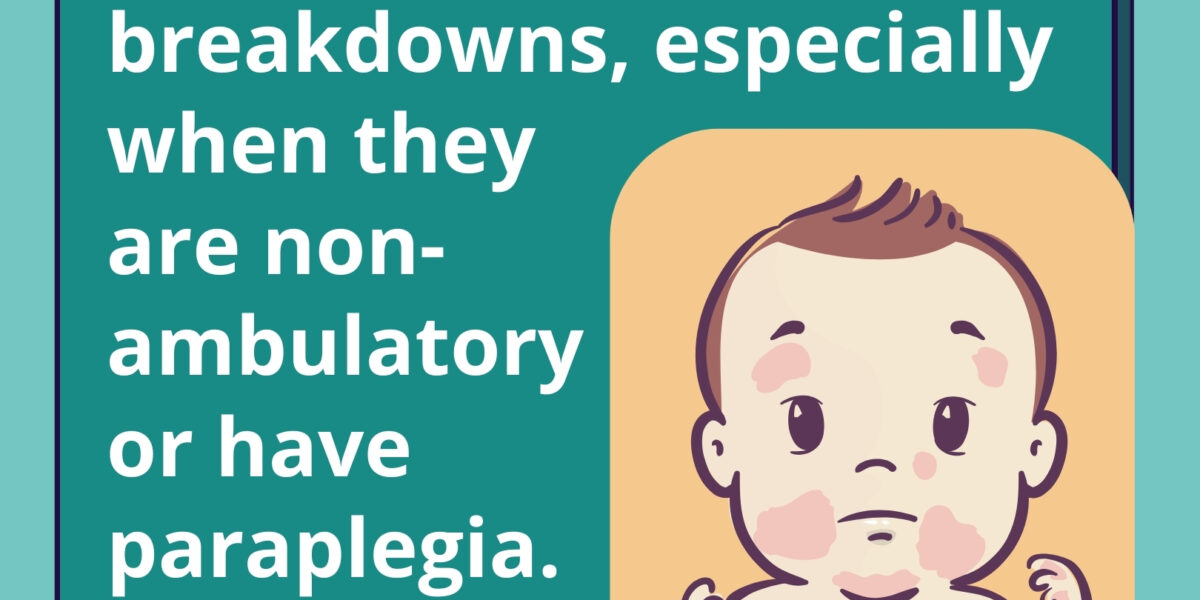Children with hypoxic-ischemic encephalopathy (HIE) can often be at an increased risk of skin breakdowns, especially when they are non-ambulatory or have paraplegia. These children are more likely to use wheelchairs and other assistive devices. It is important to check that these devices do not cause pressure sores, irritation, or skin breakdowns, because these can become painful and uncomfortable for the child. When skin breaks down, it makes the area more susceptible to infections and inflammation.
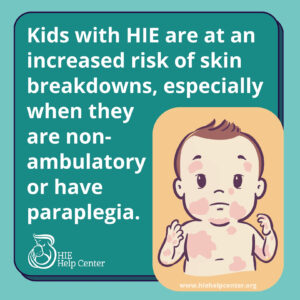 In many cases, if a child’s skin is broken or irritated, there are simple solutions to reducing redness and irritation, such as keeping the area clean and dry, repositioning the body away from the sore area, and ensuring that adaptive equipment is properly fitted. In other cases, over-the-counter solutions may be available. Prescription-strength treatments are available for particularly severe or persistent skin conditions; obtaining these treatments may require a visit to the child’s primary care provider to secure a referral to a dermatologist.
In many cases, if a child’s skin is broken or irritated, there are simple solutions to reducing redness and irritation, such as keeping the area clean and dry, repositioning the body away from the sore area, and ensuring that adaptive equipment is properly fitted. In other cases, over-the-counter solutions may be available. Prescription-strength treatments are available for particularly severe or persistent skin conditions; obtaining these treatments may require a visit to the child’s primary care provider to secure a referral to a dermatologist.
What Causes Skin Conditions in Children with HIE?
Children with HIE may develop skin irritation due to:
- Skin breakdowns, pressure and rubbing from improperly-fitted adaptive devices or rigorous physical therapy
- Allergic reactions to medications
- Voluntary or involuntary self-injury, which can be co-occurrent with intellectual/developmental disability (I/DD)
- Oral motor dysfunction causing excessive drooling: excessive salivation can irritate skin
- Hearing/vision impairments, which increase the risk of injury due to environmental hazards
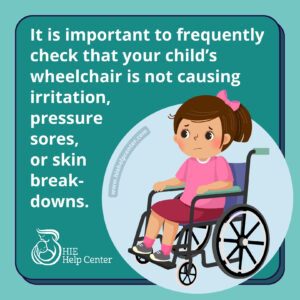 There are other factors that can predispose a child to having skin conditions, including genetic predisposition, nutritional deficiencies, exposure to certain pathogens, poor hygiene, and prolonged irritation.
There are other factors that can predispose a child to having skin conditions, including genetic predisposition, nutritional deficiencies, exposure to certain pathogens, poor hygiene, and prolonged irritation.
Which skin conditions are common?
- Infections (yeast, bacterial, viral, parasitic, fungal, etc.)
- Skin ulcers or pressure sores
- Skin redness of irritation
- Boils
- Folliculitis
- Acne
- Psoriasis
Preventing or Minimizing Skin Breakdown
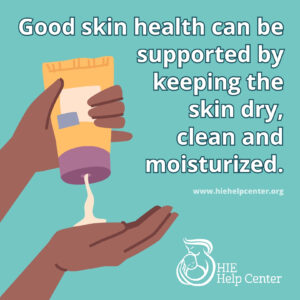 General skin health can be supported by keeping the skin dry, clean and moisturized, just as with any individual. This is especially critical for individuals using adaptive equipment that can cause added friction. Other tips for promoting skin health include:
General skin health can be supported by keeping the skin dry, clean and moisturized, just as with any individual. This is especially critical for individuals using adaptive equipment that can cause added friction. Other tips for promoting skin health include:
- Washing hands often
- Keeping hair clean and moisturized to prevent itching
- Maintaining orthotics properly for fit and function
- Washing and changing clothing often
- Making sure clothing and shoes fit properly (not too tight or too loose)
- Keeping nails trimmed to prevent scratching
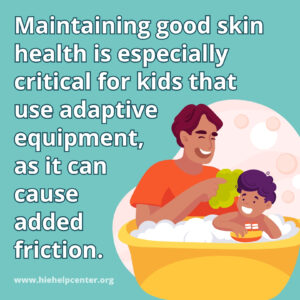 Keeping existing open wounds clean
Keeping existing open wounds clean- Checking for allergic reactions to deodorant, moisturizer/lotion, laundry products, soaps and perfumes, medications, etc.
- Changing bedding regularly
- Changing incontinence products (diapers, incontinence pads, etc.) as needed
- Checking bedding, clothing and skin for bed bugs, lice and dust mites, which can irritate skin
- Positioning the child for increased circulation
- Checking for environmental irritants:
- Check bedding for bedbugs and dust mites
- Check hair for lice
- Check skin (especially underarms, buttocks, groin and limbs) for signs of redness/irritation

